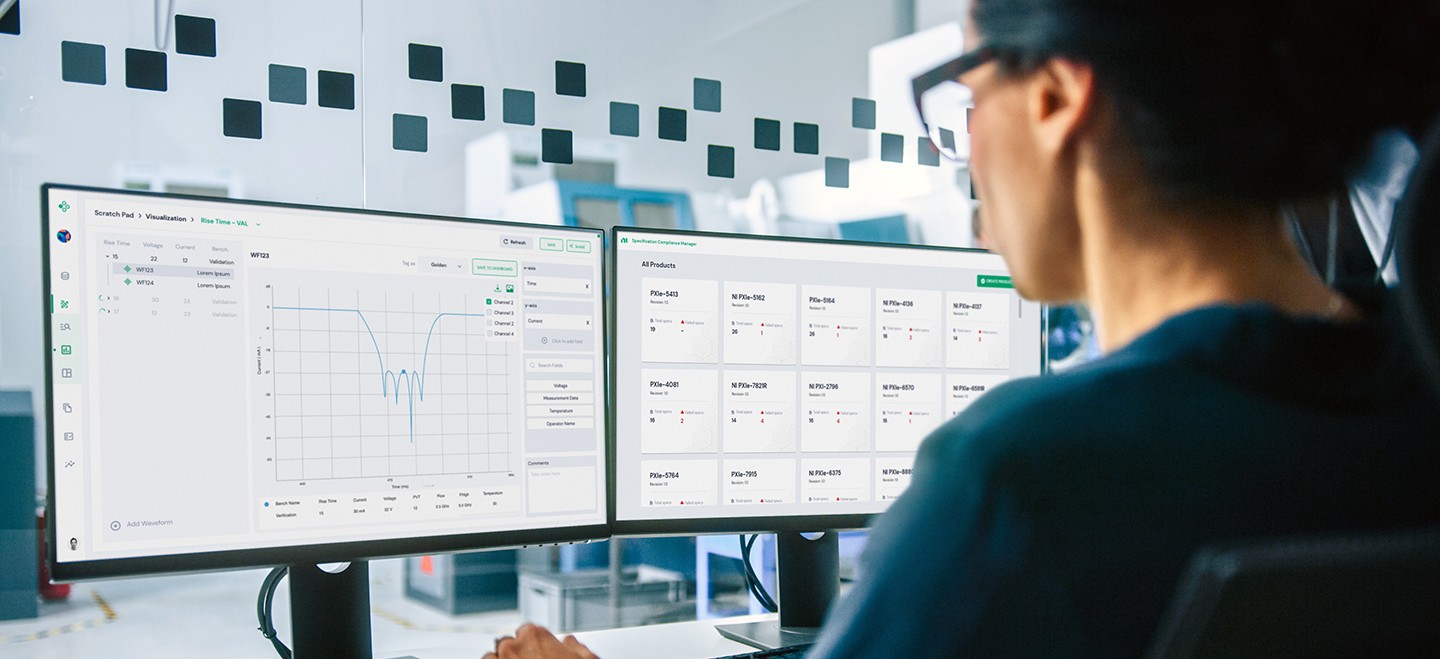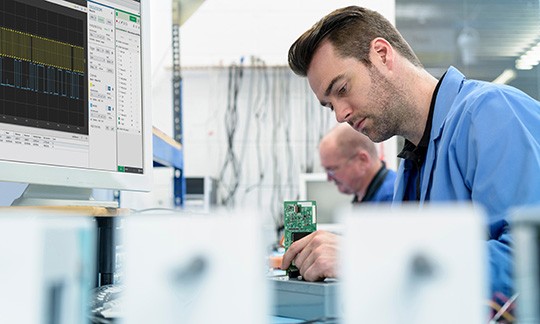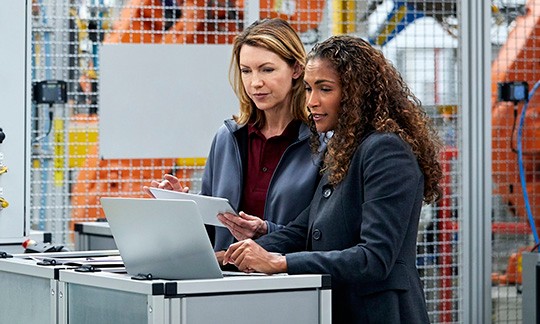
Standardize Software to Become an Engineering Powerhouse
BUSINESS INSIGHT
SEMICONDUCTOR | 4 MINUTE READ
Test engineers have an opportunity to share data across silos, improve collaboration, and accelerate product development through software standardization.
Remember Val? A few months ago, we introduced you to our dear friend Val, the validation engineer. She is still hard at work in the lab, battling aggressive time-to-market demands and increased test coverage for complex designs that have shortened her validation window. Each day, she’s learning to streamline the validation process and future-proof her lab to maximize efficiency and keep up with the pace of change spurred by rapid innovation.
Val has been working closely with her vendor, NI, to find scalable solutions that optimize her workflow. For instance, she’s incorporated simple measurement automations that have reduced characterization time and produced invaluable data. Yet, when it comes to productivity, there’s always progress to be made. Lately, she’s felt like her engineering team has been working in silos, and she’s frustrated with the disjointed workflow from design to production. Each team is building its own test systems across development stages, and each team collects data that may or may not easily correlate because everyone is looking at different parameters.
Trapped in these silos, Val realized that her test team can reach its full potential only by improving collaboration and test methodologies. After reading NI’s latest ebook, How to Become an Engineering Powerhouse, she’s inspired to knowledge-share across teams and leverage data more intelligently—and she has recruited a special teammate to help her with this journey: Pat, the production engineer.
Working in Harmony
Pat and Val know that they should be working in harmony to ensure reliability throughout the development process and bring their high-performance products to market quickly. But because of duplicate structures in their organization—compounded by the fact that their organization recently underwent an acquisition—they often work redundantly, trying to solve the same challenges. For example, instead of sharing software code, they both spend tremendous amounts time developing code for their test instruments even before taking a single measurement. In addition to coding scripts to set up their test systems, both their teams repetitively develop code for the automation software to loop and queue test sequences to run when they’re not in the lab.

Pat and Val’s managers emphasize that this duplication wastes time and resources—maintaining software can be expensive. Every moment and penny counts, especially as more technology companies compete for the biggest market share. Devices are getting smarter and capabilities are enhancing rapidly, resulting in increasingly complex designed circuits—but despite complexity challenges, chipmakers and electronic makers are still racing to get to market first. Much of the pressure falls on validation and production engineers, who are expected to do their jobs faster, yet at the same level of excellence. In this high-stakes environment, a disjointed or inefficient workflow can easily become an obstacle against meeting the aggressive schedule.
Software Solutions Save Time
How can we fix these inefficiencies? One way is through software standardization. Many organizations are starting to leverage IP across different stages of product development to lay the foundation for consistent data capturing and open the door for seamless data correlation. Connecting the product lifecycle enables smarter, more insightful data analytics. Especially for global organizations with numerous locations, data sharing; replicated, standardized testing methodologies across geographies; and code libraries significantly can decrease engineering time.
Standardizing and reusing test software may seem like a lofty task. Fortunately, you don’t have to reinvent the wheel with in-house solutions. As clever engineers, Pat and Val are not adequately served by spending time building a do-it-yourself data platform. Instead, they should be generating productivity elsewhere and focusing on designing innovative products.
Val turned to her trusted partner NI at the beginning of her modernization journey when she was overwhelmed with her workflow. Now, with the support of other teammates like Pat, her organization is ready to start standardizing test software and implementing more open, scalable, and integrated data-sharing best practices across all stages with NI’s off-the-shelf solutions.
Sparking New Conversations
Even with new tools and methodologies, Pat and Val know that promoting better communication is key to breaking down silos. They have been advocating to create more open channels for discussion in which engineers can share ideas and ask questions, such as training and debugging communities.
Only teams that capitalize on the unique opportunity of connecting workflows will unlock the next level of insight and collaboration. Does your team know the next step in revamping your lab? Learn how NI can help and explore solutions to globally maximize IP, improve productivity, and accelerate product development.


